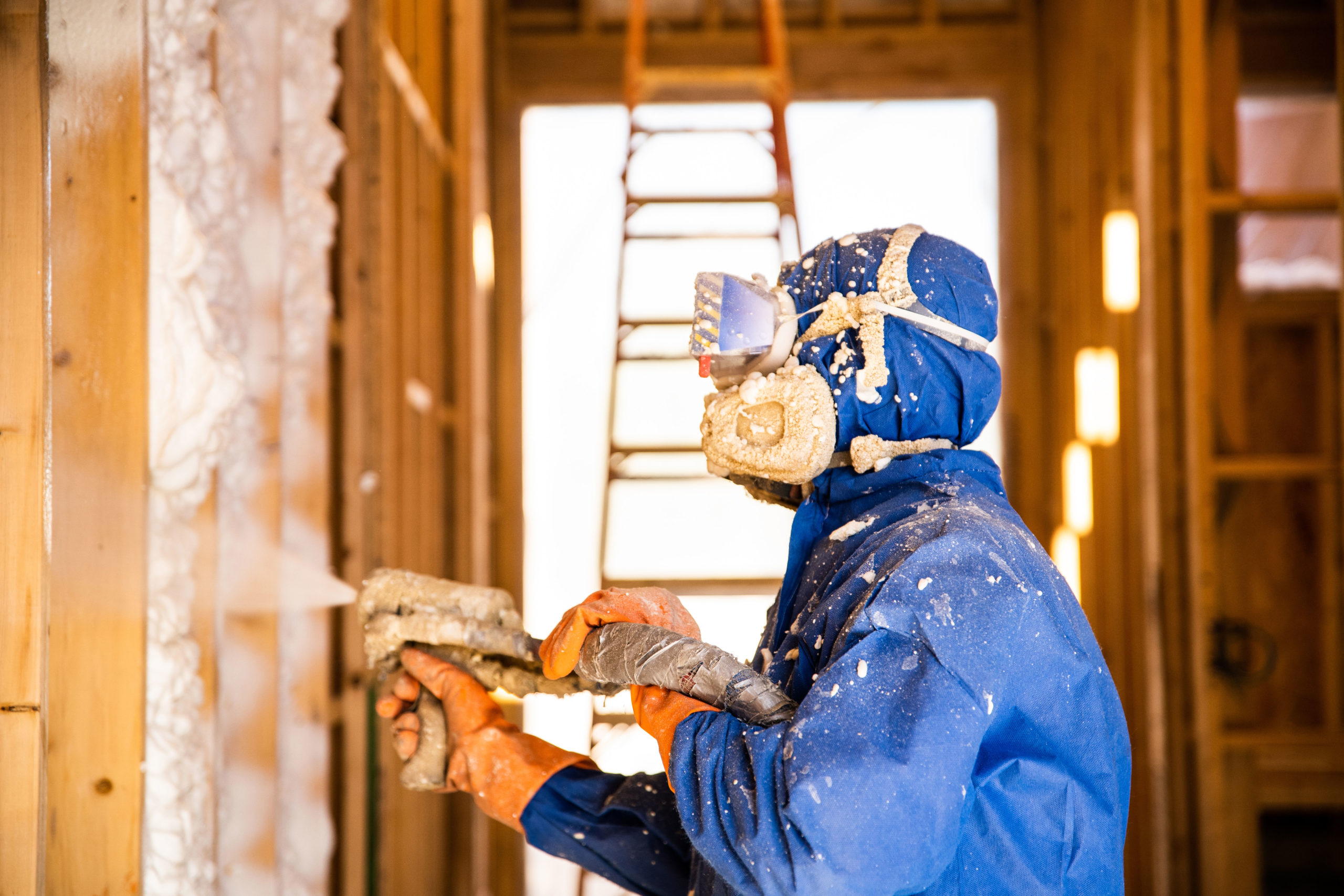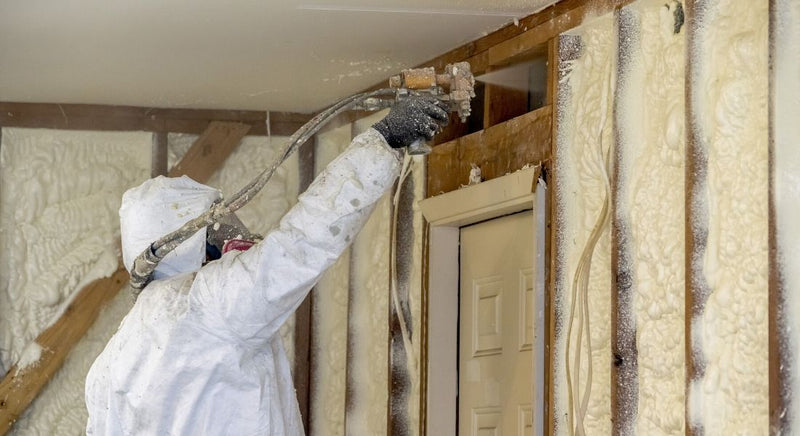Contrasting Spray Foam to Standard Insulation: Which Is Much better?
Contrasting Spray Foam to Standard Insulation: Which Is Much better?
Blog Article
Spray Foam: The Ultimate Solution for Air Sealing and Insulation
Spray foam insulation has arised as a leading solution for efficient air securing and thermal insulation, providing an one-of-a-kind mix of homes that establish it in addition to conventional techniques. Its capacity to expand and fill up spaces makes it specifically reliable in avoiding air leak, which can significantly affect energy effectiveness. Recognizing the full scope of its benefits, installation processes, and contrasts with various other insulation kinds is crucial for making notified choices. As we discover these aspects, the implications for both new building and constructions and retrofits become significantly significant. What variables should influence your choice?
What Is Spray Foam?
Spray foam is a functional insulation product that integrates the principles of air securing and thermal resistance to improve energy performance in buildings. Composed largely of polyurethane or other comparable substances, spray foam is applied as a fluid that broadens upon contact with surface areas, creating a strong, constant layer of insulation. This unique residential or commercial property permits it to fill up gaps, splits, and spaces that typical insulation products may ignore, providing a premium air seal.
There are two major types of spray foam: open-cell and closed-cell. Open-cell spray foam is lighter and more versatile, offering exceptional sound absorption and a reduced R-value per inch - Spray Foam. In contrast, closed-cell spray foam is denser, giving a higher R-value, dampness resistance, and added architectural integrity to developing parts
The application process typically includes customized equipment, making sure a seamless application that complies with numerous substrates, including concrete, metal, and wood. This flexibility makes spray foam suitable for both new building and constructions and retrofitting existing structures. Its capability to develop an impermeable barrier substantially adds to decreasing energy intake and boosting indoor air quality, consequently making it a recommended choice among homeowners and contractors alike.
Benefits of Spray Foam Insulation
Among one of the most substantial benefits of spray foam insulation is its remarkable ability to create a constant air obstacle, which successfully reduces energy loss. Unlike traditional insulation products, spray foam expands to fill fractures and voids, making sure that air leak is substantially reduced. This particular not only improves energy efficiency but also leads to lower energy costs gradually.
Furthermore, spray foam insulation supplies exceptional thermal resistance, contributing to a more stable interior atmosphere. Its high R-value per inch enables effective insulation in confined rooms, making it suitable for attic rooms, walls, and crawl spaces. The moisture-resistant buildings of spray foam assistance avoid mold and mildew and mold growth, advertising healthier living problems.
One more vital advantage of spray foam insulation is its sound-dampening high qualities (Spray Foam). It efficiently lowers noise transmission in between spaces, creating a quieter and a lot more comfortable home setting. The sturdiness of spray foam also attracts attention, as it does not sag or resolve in time, keeping its performance throughout its life-span
Exactly How Spray Foam Functions
Comprehending just how spray foam insulation functions is vital for valuing its efficiency in air securing and thermal resistance. Spray foam insulation contains two key components: isocyanate and polyol material. When these parts are blended, they undertake a chemical reaction that triggers the product to expand quickly, developing a dense foam that fills up dental caries, cracks, and spaces.
As the foam broadens, it complies with surface areas, forming an airtight seal that considerably lowers air seepage. This characteristic makes spray foam insulation highly efficient at stopping drafts and dampness infiltration, which can lead to energy loss and damage in time. Furthermore, the closed-cell variation of spray foam uses premium thermal resistance as a result of its inflexible structure, effectively reducing heat transfer.
The distinct residential properties of spray foam permit it to comply with uneven surface areas, making certain thorough insurance coverage and a smooth obstacle. As an outcome, spray foam insulation not only improves energy efficiency but also adds to have a peek at this website boosted interior air high quality by decreasing the build-up of allergens and pollutants. Inevitably, comprehending the auto mechanics behind spray foam highlights its role as a superior selection for insulation and air securing in both property and commercial applications.
Setup Process Review

Before installment, the space should be sufficiently cleaned up and prepped, making certain that surfaces are devoid of dampness, particles, and dust. This step is vital because pollutants can jeopardize attachment and overall performance. When the location is prepared, the application entails mixing the two components of the spray foam, which expands upon get in touch with and fills up voids efficiently.
Educated specialists should conduct the installment, using customized equipment to make certain consistent coverage and optimal thickness. Security precautions, consisting of wearing protective gear and ensuring proper air flow, are important during this process. After application, the foam typically cures promptly, creating a strong barrier that enhances power performance.
Contrasting Spray Foam to Conventional Insulation
When examining insulation options, spray foam insulation stands out in contrast to conventional products such as fiberglass and cellulose. Unlike fiberglass and cellulose, which can enable air seepage, spray foam broadens upon application, filling voids and gaps to produce an airtight seal.
Additionally, spray foam gives a higher R-value per inch than traditional insulation kinds, providing even more effective thermal resistance in a thinner account. This particular is particularly beneficial precede with limited cavity depth. Spray foam is immune to moisture and mold development, which can be a substantial issue with cellulose and fiberglass, especially in moist environments.
Nevertheless, spray foam insulation typically brings a greater ahead of time price than its conventional counterparts. Home owners must weigh this preliminary financial investment versus lasting energy savings and performance benefits. Eventually, while both insulation kinds offer their objective, spray foam emerges as a more advanced service for contemporary insulation requirements, specifically in regards to air securing and thermal performance.

Conclusion
In recap, spray foam insulation represents an extremely effective remedy for accomplishing ideal air sealing and thermal resistance. Its unique residential properties, consisting why not try this out of dampness resistance and audio dampening, make it suitable for different applications in both new building and constructions and retrofitting tasks (Spray Foam). The preliminary prices might be higher contrasted to traditional insulation products, the long-term advantages, such as substantial power financial savings and boosted interior air quality, validate the investment and underscore its worth in modern building practices.
Spray foam insulation has arised as a leading solution for reliable air securing and thermal insulation, offering an one-of-a-kind mix of buildings that set it apart from traditional techniques.Spray foam is a versatile insulation product that integrates the concepts of air sealing and thermal resistance to boost energy performance in buildings.When evaluating insulation alternatives, spray foam insulation stands out in comparison to standard products such as fiberglass and cellulose. Ultimately, while both insulation kinds offer their purpose, spray foam arises as a more sophisticated service for modern-day insulation needs, especially in terms of air securing and thermal effectiveness.
In recap, spray foam insulation stands for a highly efficient remedy for achieving ideal air securing and thermal resistance.
Report this page